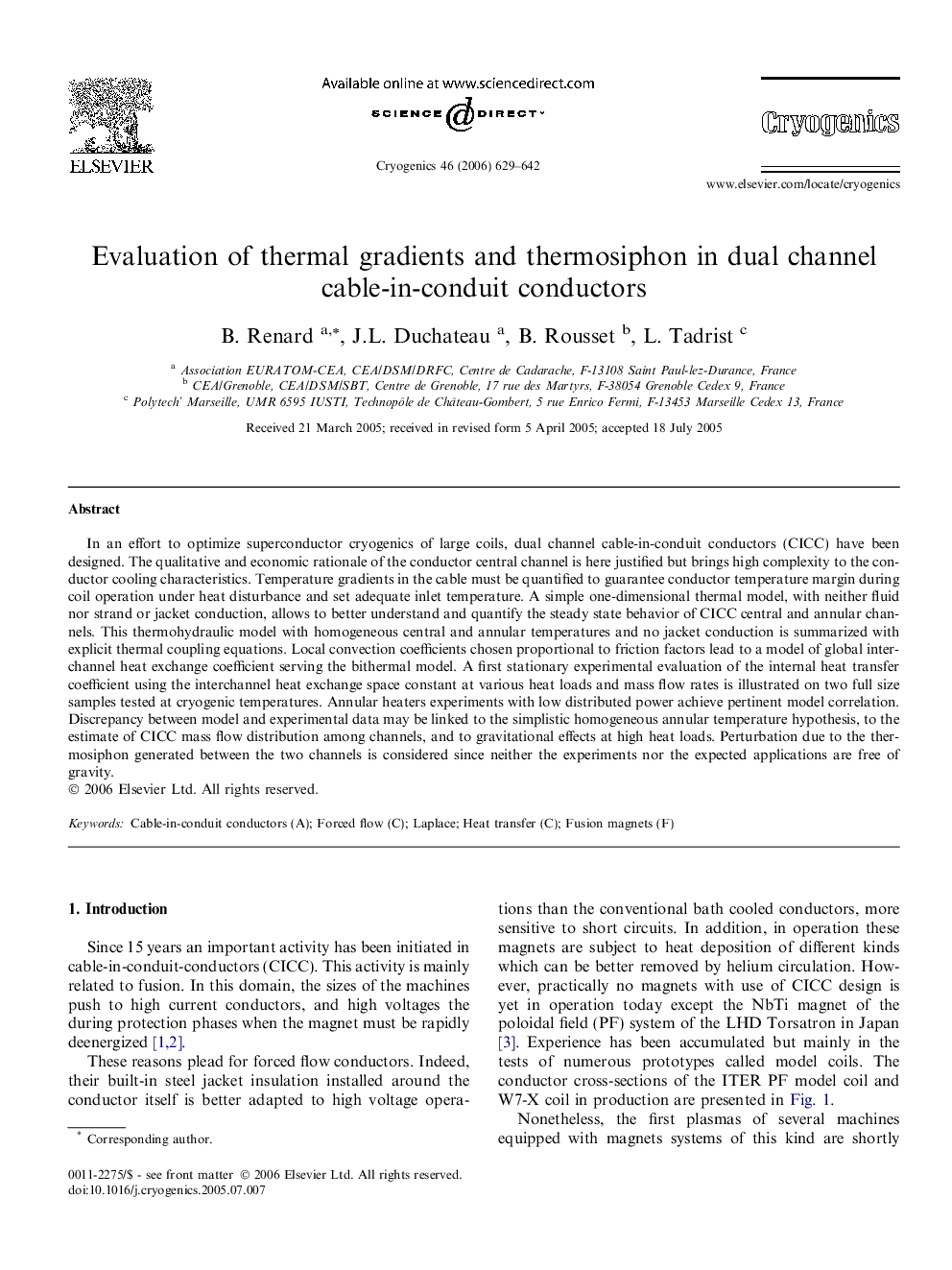| Article ID | Journal | Published Year | Pages | File Type |
|---|---|---|---|---|
| 1508510 | Cryogenics | 2006 | 14 Pages |
Abstract
In an effort to optimize superconductor cryogenics of large coils, dual channel cable-in-conduit conductors (CICC) have been designed. The qualitative and economic rationale of the conductor central channel is here justified but brings high complexity to the conductor cooling characteristics. Temperature gradients in the cable must be quantified to guarantee conductor temperature margin during coil operation under heat disturbance and set adequate inlet temperature. A simple one-dimensional thermal model, with neither fluid nor strand or jacket conduction, allows to better understand and quantify the steady state behavior of CICC central and annular channels. This thermohydraulic model with homogeneous central and annular temperatures and no jacket conduction is summarized with explicit thermal coupling equations. Local convection coefficients chosen proportional to friction factors lead to a model of global interchannel heat exchange coefficient serving the bithermal model. A first stationary experimental evaluation of the internal heat transfer coefficient using the interchannel heat exchange space constant at various heat loads and mass flow rates is illustrated on two full size samples tested at cryogenic temperatures. Annular heaters experiments with low distributed power achieve pertinent model correlation. Discrepancy between model and experimental data may be linked to the simplistic homogeneous annular temperature hypothesis, to the estimate of CICC mass flow distribution among channels, and to gravitational effects at high heat loads. Perturbation due to the thermosiphon generated between the two channels is considered since neither the experiments nor the expected applications are free of gravity.
Related Topics
Physical Sciences and Engineering
Materials Science
Electronic, Optical and Magnetic Materials
Authors
B. Renard, J.L. Duchateau, B. Rousset, L. Tadrist,
